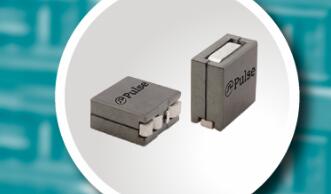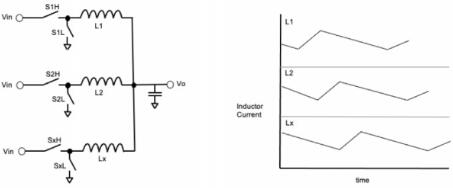Manufacturers
- Abracon
- Adam Tech
- Aerospace, Defense & Marine
- Agastat
- AIC
- AKM Semiconductor
- Alcoswitch
- Allegro
- Alps Electric
- Altera
- AMI Semiconductor
- AMP
- ams
- Analog Devices (ADI)
- Aptina Imaging
- Atmel
- Avago / Broadcom
- AVX
- Axicom
- Bccomponents
- Beyschlag
- BI Technologies
- Bourns Inc.
- Bowei Integrated Circuits
- Bridgelux
- Buchanan
- California Micro Devices
- Catalyst Semiconductor
- CGS
- Cirrus Logic
- Citizen Electronics
- CML Microcircuits
- Coiltronics
- Cooper Bussmann
- Corcom
- Core Logic
- Cree
- CSR PLC
- CTS
- Cypress Semiconductor
- Dale
- Data Image
- Deutsch
- Diodes Incorporated
- DOMINANT Opto Technologies
- E-T-A
- Eaton
- ECS
- Edison Opto
- Elcon
- EPCOS
- Epistar
- Epson
- Everlight Electronics
- Exar
- Fairchild Semiconductor
- FCI
- Freescale Semiconductor
- Fremont Micro Devices (FMD)
- Fujitsu Semiconductor
- Fulltech Electric
- General Semiconductor
- Harvatek
- Holsworthy
- Hsuan Mao Technology
- IDT
- Infineon Technologies
- Innolux
- International Rectifier (IR)
- Intersil
- IRC
- ISSI
- IXYS-IC
- Jing Cheng Electronical
- JL World
- Johanson Dielectrics
- Johanson Technology
- JRC / NJR
- JST
- KEC
- Kilovac
- Kingbright
- Kyocera Industrial Ceramics
- LEDiL
- Linear Technology / ADI
- Lite-On Technology
- Littelfuse
- Lumex
- Lumileds
- Luminary Micro
- Luminus Devices
- Macronix
- Maojwei / ZJPT
- Maxim Integrated
- MCC
- Mean Well Enterprises
- Microchip Technology
- Micron
- Microsemi
- Mini-Circuits
- Molex
- Murata Manufacturing
- Murata Power Solutions
- MWT
- National Semiconductor
- Nichicon
- Nippon Chemi-Con
- NJR / JRC
- NVE
- NXP Semiconductors
- OEG
- Omnivision
- ON Semiconductor
- Optek Technology
- Optrex
- OSRAM Opto Semiconductors
- OTAX
- Panasonic
- Peregrine(pSemi)
- Potter & Brumfield
- Power Integrations
- PowerStor
- Preci-Dip
- Prewell
- Products Unlimited
- Pulse Electronics
- PulseCore Semiconductor
- Qorvo
- Raychem
- Renesas Electronics
- RFMD
- Richtek Technology
- ROHM Semiconductor
- Rubycon
- Samsung Electro-Mechanics
- Samsung Semiconductor
- Schaffner
- Schrack
- Seiko Instruments, Inc. (SII)
- Semtech
- Sensata
- Seoul Semiconductor
- Sfernice
- Sharp Display
- Sharp Microelectronics
- Silicon Labs
- Siliconix
- Skyworks Solutions
- SoniCrest / JL World
- Spansion
- Sprague
- Stanley Electric
- STMicroelectronics
- Sunny Electronics
- Susumu (SSM)
- Taimag
- Taiyo Yuden
- TDK
- TDK-Lambda
- TE Connectivity
- Teccor
- Texas Instruments (TI)
- Thin Film
- Tianma Micro-electronics
- TOCOS
- TOKO
- Toshiba Electronic Components
- TT Electronics
- Tusonix
- TXC
- Tyntek
- Vishay
- Vishay Precision Group
- Vitramon
- Walsin Technology
- Weidmuller
- Welwyn
- Wickmann
- Winbond
- Xilinx
- Yageo
- Zetex Semiconductors
- ZJPT / Maojwei
新闻中心
DUAL WINDING TLVR INDUCTORS FOR SERVER VCORE POWER, 100NH TO 180NH, 117APK
2022-12-28 | 返回
Pulse continues to expand our portfolio of inductors used to power processors, memory, FPGAs and ASICs in servers, datacenters and storage systems. Our latest product developments are specifically designed for use with the trans-inductor voltage regulator (TLVR) topology and leverage our existing high volume automated manufacturing to ensure quality, reliability, and cost-effectiveness. The TLVR topology enables faster transient response and utilizes a dual winding power bead inductor.
Traditionally, these applications have used single winding inductor used in a multi-phase buck topology which allows currents to be distributed though parallel ‘paths’ or phases. By operating each phase in a staggered fashion, the ripple currents in each phase tend to cancel at the output and the overall ripple current seen at the load is much smaller than the ripple on each phase. This approach allows smaller inductances to be used (typically on the order of 50-300nH) and can allow design engineers a trade-off between how quickly the converter responds to a change in the load current (transient response) verses stability of the control loop. By adjusting the number of phases used in the converter, the designer has flexibility to optimize the circuit for their specific application.

However, as processors and FPGA’s demand faster and larger current transients the voltage regulators used must increase their bandwidth to improve on response time. This is usually done by either increasing the number of phases and/or reducing the inductance value of each phase. These solutions create complications in the converter design. Increasing the phase count necessitates less space per phase which means less ‘width’ for the power stages and inductors. For the inductor, this space constraint creates ‘skinny’ but tall components that can become mechanically unstable which limits the ability to shrink the inductor width. Reducing the inductance value used per power stage (which is already sub 100nH) drives higher ripple currents per phase resulting in higher AC losses as well as complicating the converter control. It is important to note that transient response time of the entire converter is somewhat limited by the fact that each phase will respond to the step by increasing or decreasing its duty cycle in a round-robin fashion, one at a time.
In order to mitigate these issues and further drive performance improvements, a “Trans-Inductor” based voltage regulator was developed in the technical disclosure commons domain. The trans-inductor is very similar to a traditional one turn VR inductor, but has the addition of a second tightly coupled winding. The main low DCR ‘primary’ is used in the same fashion as in a traditional VR inductor, having a PWM input with several phases feeding the single output. Each single turn ‘secondary’ is tied in a series loop referenced to the local ground. When a load step occurs on a given phase, the resultant increase or decrease in duty cycle is reflected to its secondary winding and because the secondaries of each phase are in a series loop they all ‘see’ this change immediately. Through the magnetic coupling this ‘sensed’ change is reflected to each inductors primary winding. In effect, this allows all phases to respond simultaneously to a load transient greatly reducing the time needed for the converter to adjust.
Additionally, a compensation inductor has been introduced into the converter circuit. It is typical for this inductor to be similar in construction to a traditional VR inductor. The compensation inductor exists to give design engineers the ability to adjust the total inductance in the secondary loop, allowing for freedom to adjust for converter stability. Due to the AC coupled nature of the secondary circuit, the compensation inductor sees almost no DC current which minimizes the impact of DCR. However, the inductor is subject to a superposition of each phases ripple current. In practice, this means that for a 4 phase converter switching at 1MHz, the compensation inductor will see a reflected ripple current with a frequency of 4MHz. At such frequencies care must be taken to minimize AC winding loss as well as ensuring a proper high frequency, low loss core material is chosen.
“Trans-Inductor Voltage Regulators (TLVRs) are an exciting development that enables ultra-fast transient response in multi-phase voltage regulators and leverages our existing automated inductor infrastructure allowing us to quickly and effectively develop products for TLVR. The PAL6373.XXXHLT comes in a 12x6x12 mm package, with inductances of 100nH to 180nH and saturation currents of 117A to 65A.”
Source: https://www.pulseelectronics.com





